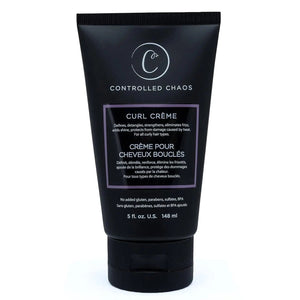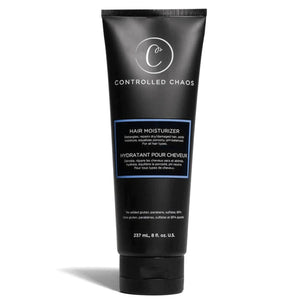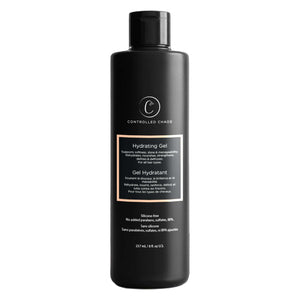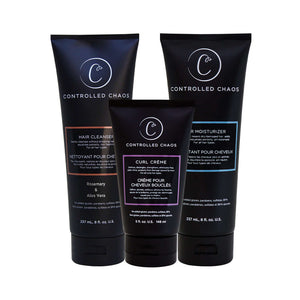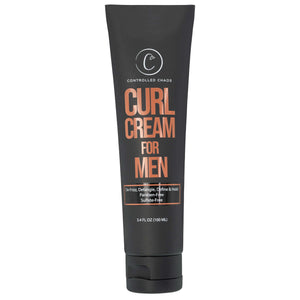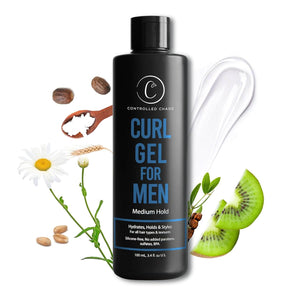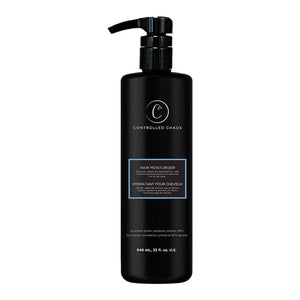

Hair texture can be a defining characteristic, and wavy and curly hair are two of the most common types. While they may seem similar at first glance, the differences between them are significant when it comes to care and maintenance. Understanding these differences is essential for choosing the right products and developing a proper hair care routine. In this blog, we’ll explore the key differences between wavy and curly hair and offer tips on how to care for each.
What is Wavy Hair?
Wavy hair is somewhere between straight and curly. It has a gentle "S" shape, with soft, loose waves that may vary in size and pattern. Although it is often more manageable than curly hair, it still requires care to maintain its natural texture and avoid frizz. When properly styled, the waves in this hair type typically form from the root to the tip, giving it a voluminous, beachy look.
Key Characteristics of Wavy Hair:
-
Shape: Soft, loose waves that are not as defined as curls.
-
Volume: Generally, wavy hair has moderate volume.
-
Manageability: More manageable than curly hair, with a tendency to lay flat on the scalp.
-
Frizz: It can experience frizz if not correctly maintained, but it is usually less frizzy than curly hair.
What is Curly Hair?
Conversely, curly hair forms tighter spirals or corkscrews and can be more challenging to manage. It has more defined ringlets that are often prone to shrinkage, and this texture can vary from loose curls to tight, springy coils. Curly hair requires more moisture to stay hydrated, as the natural oils produced by the scalp have a more challenging time traveling down the twists and turns of each curl.
Key Characteristics of Curly Hair:
-
Shape: Defined spirals or corkscrews, often very tight or voluminous.
-
Volume: Typically more voluminous than wavy hair.
-
Manageability: Tends to be more challenging to manage and style, requiring extra care to keep curls defined.
-
Frizz: More prone to frizz due to the hair's natural texture, which can make it look untamed without proper styling and hydration.
Wavy Hair vs Curly Hair: The Main Differences
The most noticeable difference between wavy and curly hair lies in the shape and definition of the strands. Wavy hair has soft waves, while curly hair features tighter, more defined spirals or curls. Wavy hair tends to be more versatile, allowing you to straighten or curl easily. In contrast, curly hair usually stays in its natural spiral shape, requiring more effort to straighten or modify.
Another key distinction is frizz control. Curly hair tends to be more prone to frizz due to its structure, which can cause the cuticle to lift. Wavy hair is less susceptible to this but requires care to maintain its smoothness and shine.
How to Care for Wavy Hair
Caring for wavy hair is about defining those soft waves while preventing frizz. The right products can help maintain the natural texture of wavy hair while keeping it smooth and manageable. Here are some tips for caring for wavy hair:
1. Hydration is Key:
Although wavy hair is more manageable than curly hair, it requires hydration. Use a lightweight hair moisturizer or leave-in conditioner to keep your hair hydrated without weighing it down.
2. Avoid Over-Washing:
If washed too frequently, wavy hair can become dry and frizzy. Wash it two to three times a week to preserve its natural oils and texture.
3. Use a Heat Protectant:
If you love styling your waves with heat, always apply a heat-protectant spray to shield your hair from damage.
4. Choose Lightweight Products:
Avoid heavy creams or oils that may weigh down the waves. Lightweight mousses, gels, or leave-in conditioners enhance natural waves without making them greasy.
5. Gentle Drying:
Rather than rubbing your hair with a towel, gently blot it dry with a microfiber towel or an old T-shirt. This will reduce frizz and prevent breakage.
How to Care for Curly Hair
Curly hair requires more attention and care to maintain its structure and health. The tighter the curl, the more care it will need to prevent frizz and maintain definition. Here are essential tips for caring for curly hair:
1. Moisturize, Moisturize, Moisturize:
Curly hair is more prone to dryness because natural oils have difficulty traveling down the twists. To keep your curls hydrated and shiny, use a deep conditioner regularly and incorporate leave-in conditioners or hair oils.
2. Use Curl-Specific Products:
Look for shampoos, conditioners, and styling gels specifically designed for curly hair. These products are formulated to enhance curls while maintaining their shape and minimizing frizz.
3. Avoid Heat Styling:
Excessive heat can damage curly hair and alter its natural texture. Let your curls air-dry or use a diffuser if you must blow-dry, always on the lowest heat setting.
4. Protective Styling:
Consider protective styles like braids, buns, or twists to prevent damage while allowing your curls to rest and retain moisture. This is especially important if you have tight curls.
5. Regular Trims:
Curly hair can become dry and unruly, and the ends can become frizzy. Regular trims are essential to maintaining curls' shape and preventing split ends.
Common Products for Both Hair Types
While wavy and curly hair have different needs, some products can work well for both types. Look for lightweight hydrating shampoos, leave-in conditioners, and curl creams that provide nourishment. If you want to define your waves or curls without weighing them down, choose a mousse or gel with a flexible hold that won’t leave your hair feeling crunchy.
How to Style Wavy and Curly Hair?
Styling wavy and curly hair can be an art form in itself. While both hair types can embrace their natural texture, specific techniques can help you enhance the look and keep your hair healthy.
Styling Wavy Hair:
-
Loose Waves with a Curling Iron: A curling iron with a larger barrel (about 1 1/2 inches) can be a great tool if your waves need extra definition. You can wrap sections of hair around the barrel to create soft waves that add volume without compromising your natural texture.
-
Scrunching: For a more effortless look, apply a curl cream or mousse and gently scrunch your hair while it’s damp. This helps to bring out the natural wave pattern and adds volume. Avoid touching your hair too much once it’s dry to minimize frizz.
-
Beachy Waves: Achieving beachy waves requires the right balance of texture and hydration. Salt or texturizing sprays can add volume and create that windswept look, perfect for casual, laid-back styles.
-
Protective Styles: Consider a loose braid or bun to protect your waves when you don't want to fuss with your hair. These styles keep your hair out of the way while preserving texture and preventing frizz.
Styling Curly Hair:
-
The Pineapple Method: One of the best ways to preserve curl definition overnight is to use the pineapple method. Gather your curls into a loose, high ponytail on your head and secure it with a soft scrunchie. This keeps your curls intact while you sleep, preventing them from flattening.
-
Diffusing for Volume: If you prefer heat, diffusing is a savior for curly hair. Use a blow-dryer with a diffuser attachment to dry your curls without disturbing their natural shape. This method helps distribute heat evenly, preventing frizz and boosting volume.
-
Finger-Coiling: For tighter, more defined curls, try finger-coiling small sections of damp hair with a styling gel or curl cream. This technique helps encourage your natural curl pattern and ensures each curl gets its best definition.
-
Twist-Outs and Braid-Outs: Twist-outs and braid-outs add volume and definition to curly hair. After washing and conditioning, divide your hair, twist or braid each section, and let it dry. Once undone, you’ll have beautifully defined curls that last for days.
Conclusion:
Whether you have wavy or curly hair, embracing and caring for your natural texture is essential. Both hair types have unique characteristics, but can look stunning with proper care and products. By understanding the key differences between wavy and curly hair and adjusting your hair care routine to suit your needs, you can keep your hair healthy, hydrated, and beautifully styled.
Ultimately, confidence is the key to great hair, regardless of hair type. Celebrate your natural beauty and find the best routine for your hair. Whether enhancing your waves or defining your curls, the proper care will always make a difference!
FAQS
What is the difference between wavy hair and curly hair?
Wavy hair has loose "S" shaped waves that are softer and less defined than curls, while curly hair forms tighter spirals or corkscrews. Wavy hair tends to be flatter at the roots and easier to manage, whereas curly hair has more volume and can be more prone to frizz and shrinkage.
How do I care for wavy hair vs curly hair?
Wavy hair benefits from lightweight products like mousses and leave-in conditioners to enhance texture without weighing it down. Conversely, curly hair requires richer moisturizers and curl creams to maintain hydration and definition, often needing more intensive care to prevent frizz and dryness.

